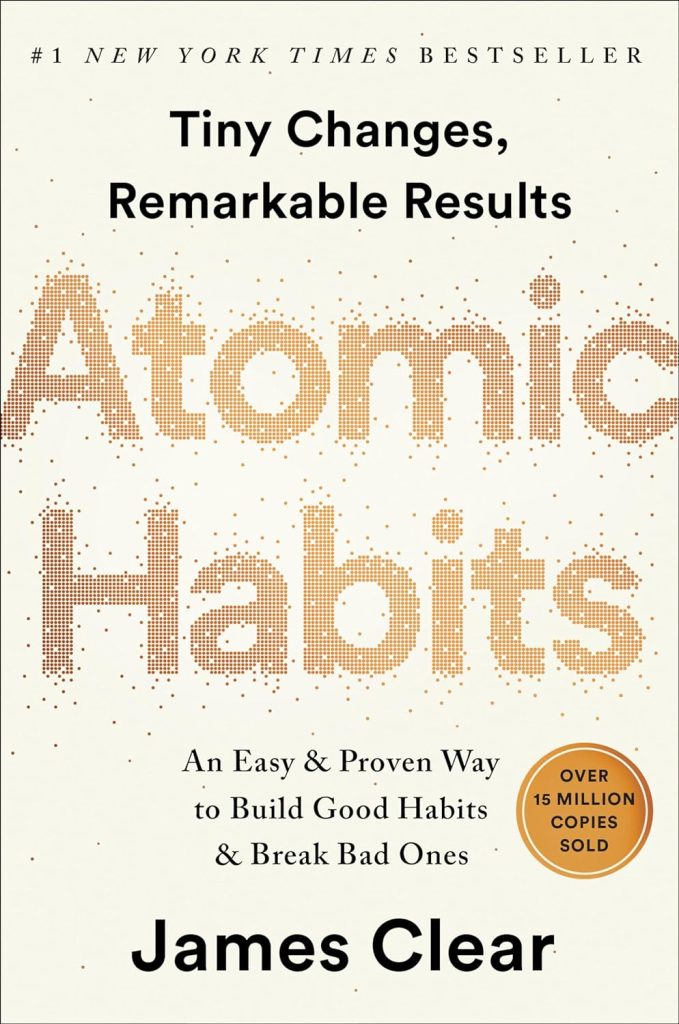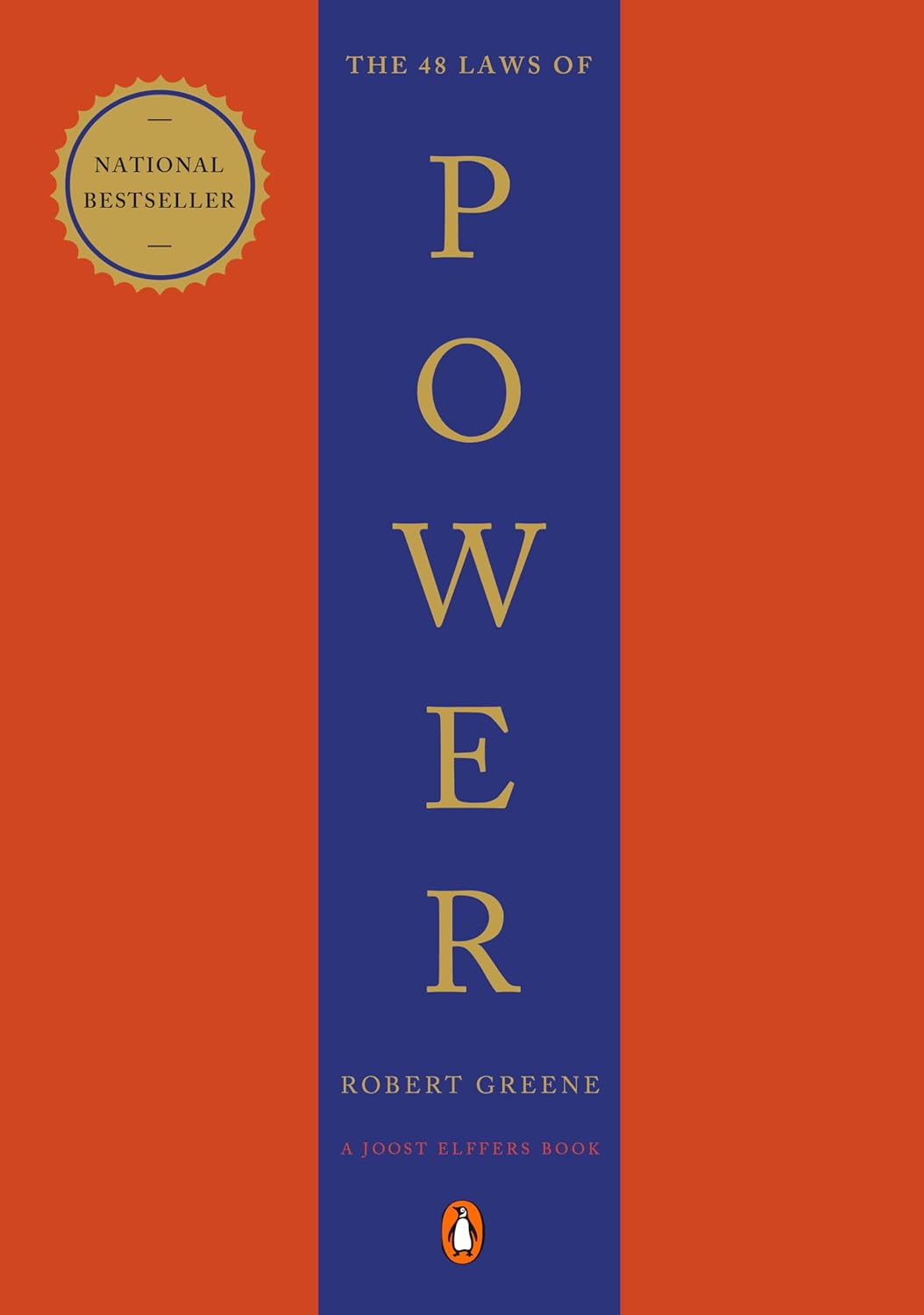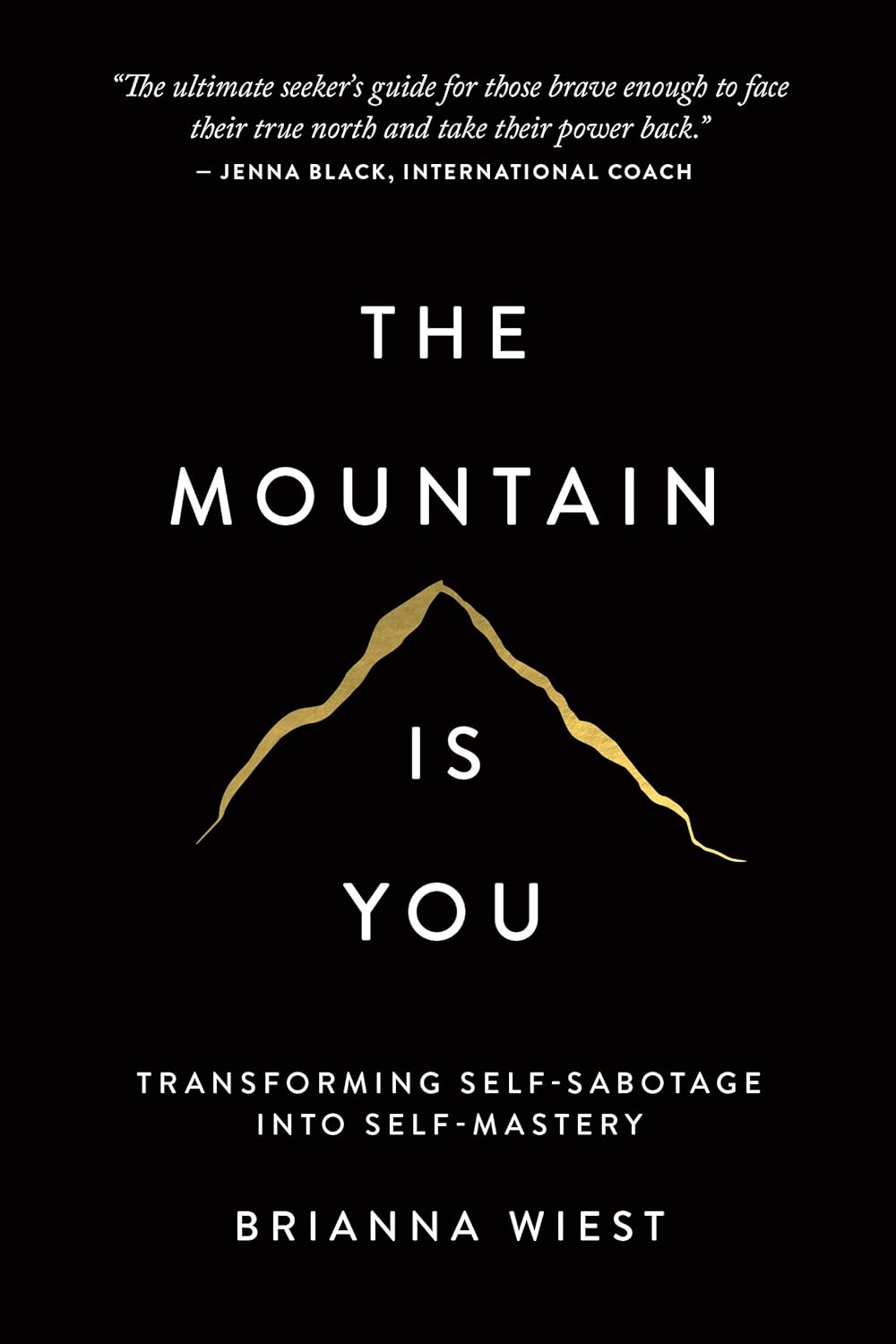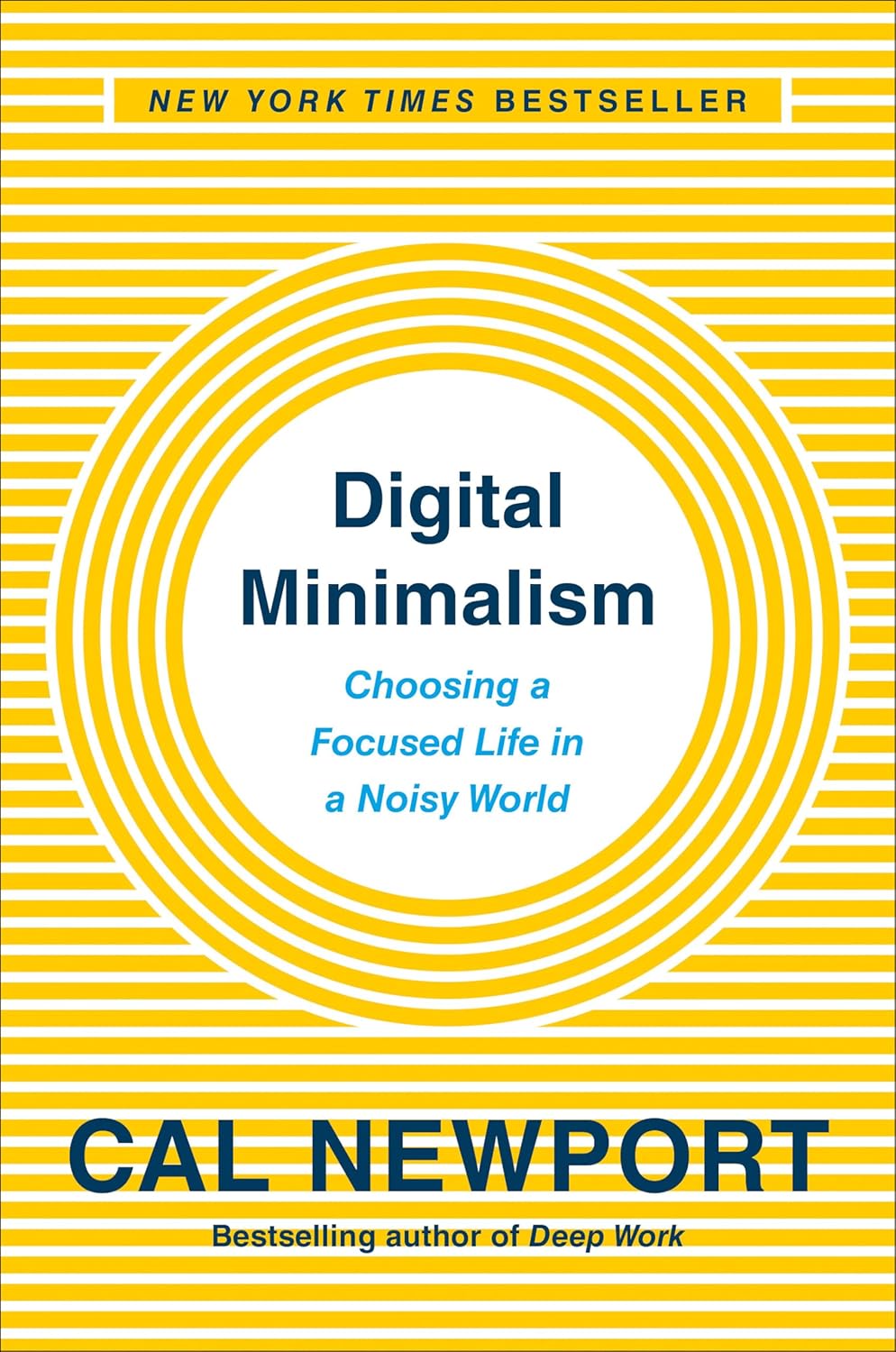
Buy The Book
Chapter
- ✦ The Surprising Power of Atomic Habits
- ✦ How Your Habits Shape Your Identity (and Vice Versa)
- ✦ How to Build Better Habits in 4 Simple Steps
- ✦ The Man Who Didn’t Look Right
- ✦ The Best Way to Start a New Habit
- ✦ Motivation Is Overrated; Environment Often Matters More
- ✦ The Secret to Self-Control
- ✦ How to Make a Habit Irresistible
- ✦ The Role of Family and Friends in Shaping Your Habits
- ✦ How to Find and Fix the Causes of Your Bad Habits
- ✦ Walk Slowly, but Never Backward
- ✦ The Law of Least Effort
- ✦ How to Stop Procrastinating by Using the Two-Minute Rule
- ✦ How to Make Good Habits Inevitable and Bad Habits Impossible
- ✦ The Cardinal Rule of Behavior Change
- ✦ How to Stick with Good Habits Every Day
- ✦ How an Accountability Partner Can Change Everything
- ✦ The Truth About Talent (When Genes Matter and When They Don’t)
- ✦ The Goldilocks Rule: How to Stay Motivated in Life and Work
- ✦ The Downside of Creating Good Habits
- ✦ The Secret to Results That Last
Atomic Habits: An Easy & Proven Way to Build Good Habits & Break Bad Ones

About
The book delves into the power of small, consistent changes in behavior to achieve significant personal transformation. The book begins with Clear’s personal recovery story, illustrating how minor habits can lead to major improvements over time. Central to the book is the idea that habits are the compound interest of self-improvement, where tiny daily gains accumulate into remarkable outcomes.
Clear introduces the Four Laws of Behavior Change: Make It Obvious, Make It Attractive, Make It Easy, and Make It Satisfying. These principles serve as a guide for developing good habits and breaking bad ones. Through examples like the success of British Cycling, Clear demonstrates how small adjustments can lead to extraordinary success.
The book combines insights from various fields, including biology and psychology, to explain the mechanics of habits and how they can be aligned with one’s identity for lasting change. Clear also addresses the challenge of maintaining habits, emphasizing the importance of perseverance through the Plateau of Latent Potential, where progress is not immediately visible.
In summary, “Atomic Habits” provides a practical framework for anyone looking to enhance their life through incremental changes, highlighting that success is the culmination of consistent daily habits.

Spark
Learn
Review
✦ The Surprising Power of Atomic Habits
In 2003, British Cycling was in a state of disarray, with a century of mediocrity and no wins in the Tour de France. Dave Brailsford, appointed as the performance director, introduced his strategy of “the aggregation of marginal gains.” This approach focused on making tiny 1 percent improvements in every aspect related to cycling.
Brailsford’s team made noticeable adjustments, such as redesigning bike seats, enhancing tire grip with alcohol, and using biofeedback sensors. They also took unconventional steps, like testing different massage gels, optimizing hand-washing techniques to prevent illness, and even painting the team truck white to spot dust that could affect bike performance.
These small improvements quickly accumulated, leading to extraordinary results. Within five years, British Cycling dominated the 2008 Beijing Olympics, winning 60 percent of the gold medals. By the 2012 London Olympics, they set nine Olympic and seven world records. Bradley Wiggins and Chris Froome won the Tour de France five times between 2012 and 2017. Over this decade, British cyclists claimed 178 world championships and 66 Olympic or Paralympic gold medals, marking an unprecedented era of success in cycling.
✦ How Your Habits Shape Your Identity (and Vice Versa)
Changing habits can be tough, especially when good habits are hard to maintain and bad ones seem to persist effortlessly. The challenge lies in how we approach habit change: we often focus on the wrong aspects and use ineffective methods.
There are three layers to behavior change:
1. **Outcomes**: This layer is about the results you want, such as losing weight or winning a championship. Most goals are outcome-focused.
2. **Processes**: This level involves the routi nes and systems you implement, like a new exercise regimen or a meditation practice.
3. **Identity**: The deepest level focuses on changing your beliefs and self-image, such as how you view yourself or your core values.
The mistake many people make is starting with outcome-based habits, focusing on what they want to achieve rather than who they want to become. Identity-based habits, on the other hand, start with a shift in beliefs about yourself, leading to more sustainable and profound changes.
To build lasting habits, it’s crucial to focus on identity change first. This means aligning your habits with the person you wish to become, which ultimately makes maintaining good habits and breaking bad ones easier.
✦ How to Build Better Habits in 4 Simple Steps
In 1898, psychologist Edward Thorndike conducted an experiment with cats to understand habit formation. He placed cats in a “puzzle box” where they could escape by performing a simple action, like pressing a lever, to reach food. Initially, the cats moved randomly, but once they accidentally discovered the correct action, they began to associate it with the reward of escaping and getting food.
Thorndike observed that with repeated trials, the cats learned to escape more quickly and efficiently. For example, one cat reduced its escape time from 1.5 minutes to just 6.3 seconds after multiple attempts. This demonstrated that with practice, actions become automatic and habitual.
Thorndike’s findings led him to formulate the “Law of Effect,” which states that behaviors followed by satisfying outcomes are likely to be repeated, while those followed by unpleasant outcomes are less likely to recur. This principle laid the groundwork for understanding how habits form and why they become ingrained in our behavior.
✦ The Man Who Didn’t Look Right
Psychologist Gary Klein recounted a story about a paramedic who, at a family gathering, noticed something unusual about her father-in-law’s appearance. Despite him feeling fine, she insisted he go to the hospital. Her intuition proved lifesaving when he was diagnosed with a severe artery blockage that required immediate surgery.
The paramedic’s years of experience enabled her to detect subtle changes in blood flow patterns on the face caused by obstructed arteries, even though she couldn’t articulate what she saw.
This kind of expertise-based intuition is not unique. For instance, during the Gulf War, military analysts can distinguish between an enemy missile and friendly aircraft on radar, despite their similar appearances. Lieutenant Commander Michael Riley famously saved a battleship by ordering the destruction of a missile that appeared identical to the ship’s own planes. His decision, based on intuitive judgment, exemplified how deep experience can lead to critical, life-saving insights even when the exact reasoning remains unexplained.
✦ The Best Way to Start a New Habit
In 2001, researchers in Great Britain conducted a study with 248 participants to improve exercise habits over two weeks. Participants were divided into three groups:
1. **Control Group:** Simply tracked their exercise frequency.
2. **Motivation Group:** Tracked their exercise and read about its benefits, but showed no significant improvement.
3. **Implementation Intention Group:** In addition to tracking and reading about exercise benefits, they specified a concrete plan: “During the next week, I will exercise for at least 20 minutes on [DAY] at [TIME] in [PLACE].”
While 35-38% of the control and motivation groups exercised weekly, 91% of the implementation intention group did, more than double the usual rate. This method, known as an implementation intention, involves creating a specific plan for when and where to act, leveraging time and location cues to trigger habits.
Research consistently shows that implementation intentions—like setting precise times and places for tasks—greatly improve adherence to goals. They enhance habits such as recycling, studying, and even voting by converting vague intentions into actionable plans. By defining exact details, you increase your chances of following through on new habits.
✦ Motivation Is Overrated; Environment Often Matters More
Anne Thorndike, a primary care physician at Massachusetts General Hospital, had a bold idea: to improve the eating habits of hospital staff and visitors without changing their motivation or willpower. Instead, she focused on altering the “choice architecture” of the hospital cafeteria.
=
In a six-month study, Thorndike and her team rearranged the cafeteria by adding water options alongside soda in the refrigerators and placing water baskets throughout the room. They also made similar adjustments with the food offerings. The result? Soda sales dropped by 11.4%, while bottled water sales increased by 25.8%, all without directly influencing customers’ choices.
This experiment highlights how our choices are influenced more by our environment than by internal factors. The placement of food and drink affects consumption habits. For instance, seeing a plate of cookies on the counter can lead to eating them without prior intention or hunger. Environments shape behaviors, making external changes often more effective than internal motivation in altering habits. Thus, every habit is closely linked to its context.
✦ The Secret to Self-Control
In 1971, Congressmen Robert Steele and Morgan Murphy uncovered a startling fact: over 15 percent of U.S. soldiers in Vietnam were addicted to heroin, with 35 percent having tried it. This discovery led to the creation of the Special Action Office of Drug Abuse Prevention under President Nixon, aimed at addressing this crisis. Research by Lee Robins revealed a surprising finding: when heroin-using soldiers returned home, only 5 percent relapsed within a year, and just 12 percent within three years. This challenged the prevailing belief that heroin addiction was permanent.
The study showed that addiction could rapidly dissolve with a significant change in environment. In Vietnam, soldiers were surrounded by triggers—easy access to heroin, the stress of war, and camaraderie with other users. Returning to the U.S. removed these triggers, leading to a dramatic decrease in addiction.
This contrasts with typical drug users who, after rehab, often relapse when returning to their previous environment filled with old triggers. The Vietnam study challenged the idea that addiction and other bad habits stem from moral weakness or lack of self-control. Instead, it suggested that those with strong self-control are better at structuring their lives to avoid tempting situations, emphasizing that creating a disciplined environment is key to overcoming destructive habits.
✦ How to Make a Habit Irresistible
In the 1940s, Dutch scientist Niko Tinbergen conducted groundbreaking research on animal behavior that reshaped our understanding of motivation. Tinbergen studied herring gulls, noting that chicks pecked at a red spot on their parents’ beaks to signal hunger. He created fake cardboard beaks with varying sizes of red dots and found that chicks pecked more vigorously at larger dots, showing a preference for exaggerated cues.
Tinbergen also observed similar instincts in greylag geese. If an egg rolled out of the nest, the goose would retrieve any nearby round object, with larger objects eliciting stronger retrieval efforts. This behavior illustrated what Tinbergen called supernormal stimuli—exaggerated versions of natural cues that provoke heightened responses.
Humans also react strongly to supernormal stimuli. For example, junk food, high in salt, sugar, and fat, triggers our reward systems intensely. This preference stems from our evolutionary past when calorie-dense foods were rare, making such foods highly valued for survival. Our brains, evolved to prioritize these nutrients, still respond powerfully to modern, exaggerated versions of these stimuli.
✦ The Role of Family and Friends in Shaping Your Habits
In 1965, Hungarian Laszlo Polgar, a staunch believer in the power of deliberate practice over innate talent, sought to prove his theory by raising his children to become chess prodigies. Polgar, convinced that anyone could excel through hard work, planned to homeschool his children with a rigorous focus on chess. He filled their home with chess books, set up frequent games, and kept detailed records of their opponents.
Laszlo married Klara, a teacher who shared his belief in skill development, and together they had three daughters: Susan, Sofia, and Judit. All three girls were immersed in chess from a young age. Susan, the eldest, was defeating adults by age four. Sofia became a world champion by fourteen and a grandmaster soon after. The youngest, Judit, surpassed them all. By five, she was beating her father, and at fifteen, she became the youngest grandmaster ever, a record she held for twenty-seven years.
Despite their intense chess-focused upbringing, the sisters found their childhood enjoyable and engaging. They thrived in an environment where chess was the norm, demonstrating how culturally ingrained habits can become deeply rewarding.
✦ How to Find and Fix the Causes of Your Bad Habits
In late 2012, during a trip to Turkey, I stayed with Mike, an American from Maine who had been living in Istanbul for five years. One evening, while dining with Mike and his Turkish friends, I learned that smoking was a common habit among them, and many had successfully quit. Mike attributed his success to Allen Carr’s book, *Allen Carr’s Easy Way to Stop Smoking*. He claimed the book freed him from the mental burden of smoking by debunking the false beliefs about cigarettes.
The book’s approach involves reframing smoking cues, challenging common misconceptions like:
– Smoking isn’t a loss; cigarettes offer no real benefits.
– You can be social without smoking.
– Smoking doesn’t relieve stress; it actually harms your nerves.
Carr’s method repeatedly emphasizes that quitting smoking means gaining health, energy, and freedom, and ultimately making smoking seem absurd. This shift in perspective aligns with the 2nd Law of Behavior Change: making the habit unattr active. While it may seem simplistic to just change your mindset, the book’s approach highlights how altering your perception can be a powerful tool in breaking a habit.
✦ Walk Slowly, but Never Backward
On the first day of class, University of Florida photography professor Jerry Uelsmann split his students into two groups. The “quantity” group, on the left, would be graded solely on the number of photos they produced—100 photos earned an A, 90 a B, and so on. The “quality” group, on the right, needed to submit just one nearly perfect photo to earn an A.
By the end of the term, Uelsmann found that the best photos came from the quantity group. These students had spent the semester actively taking photos, experimenting, and learning from their mistakes, which led to significant improvement. Meanwhile, the quality group, focused on creating a perfect image, produced little more than a single mediocre photo.
This story illustrates the difference between motion and action. Motion involves planning, strategizing, and learning, but doesn’t lead to results. Action, however, directly leads to outcomes. For example, outlining ideas for articles is motion; actually writing an article is action. Researching diets is motion; eating a healthy meal is action. While motion can be valuable, it’s action that drives progress. As Voltaire said, “The best is the enemy of the good”—perfectionism can prevent us from achieving anything at all.
✦ The Law of Least Effort
In “Guns, Germs, and Steel,” Jared Diamond highlights how the shape of continents influences human behavior. He notes that the Americas and Africa are oriented north-south, while Europe, Asia, and the Middle East stretch east-west. This difference significantly impacted the spread of agriculture.
Farmers found it easier to expand agriculture along east-west routes because regions at the same latitude share similar climates and growing conditions. This allowed crops to spread more efficiently across Europe and Asia. In contrast, the varied climates along north-south routes, like between Florida and Canada, required farmers to adapt to new conditions and domesticate different crops for each region.
As a result, agriculture spread more rapidly in Asia and Europe, leading to faster population growth and advancements in technology and military strength. This illustrates the 3rd Law of Behavior Change: while motivation is often seen as crucial for habit change, convenience and ease are more influential. Our tendency to favor what is convenient drives much of our behavior, as seen in the global spread of agriculture.
✦ How to Stop Procrastinating by Using the Two-Minute Rule
Twyla Tharp, one of the most celebrated dancers and choreographers of the modern era, attributes much of her success to simple daily habits. In her book, she describes a ritual that begins each day: waking up at 5:30 A.M., dressing in workout clothes, and hailing a cab to the gym. For Tharp, the ritual isn’t the workout itse-valf but the act of getting into the cab. This small, consistent action sets the tone for her day, making it easier to stick to her routine.
Tharp emphasizes that this ritual is crucial because it makes the process automatic, reducing the likelihood of skipping or altering it. By turning the cab ride into a habit, she simplifies her decision-making and ensures that exercise becomes a non-negotiable part of her day.
This practice illustrates the 3rd Law of Behavior Change: making habits easy to start. Researchers estimate that 40 to 50 percent of our daily actions are driven by habit. While these habits might take just a few seconds to initiate, In Tharp’s case, a simple cab ride is the key to maintaining a consistent, productive routine.
✦ How to Make Good Habits Inevitable and Bad Habits Impossible
In the summer of 1830, Victor Hugo faced a daunting deadline. A year earlier, he had promised his publisher a new book, but instead of writing, he spent the year on other pursuits and procrastinated. Frustrated, his publisher set a firm deadline, giving Hugo less than six months to finish the book. To overcome his procrastination, Hugo devised an unusual strategy: he had his assistant lock away all his clothes, leaving him with only a large shawl to wear. With no proper clothing to go outside, he stayed in his study and focused on writing. As a result, *The Hunchback of Notre Dame* was completed two weeks ahead of schedule, published on January 14, 1831.
Hugo’s strategy highlights an important concept: sometimes success isn’t about making good habits easy, but making bad habits hard. This approach is an inversion of the 3rd Law of Behavior Change—make it difficult. If you struggle to follow through on your plans, consider creating what psychologists call a commitment device. A commitment device is a present decision that restricts future behavior, helping you stick to good habits and avoid bad ones. By locking away his clothes, Hugo effectively created a commitment device that forced him to focus on his writing.
✦ The Cardinal Rule of Behavior Change
In the late 1990s, public health worker Stephen Luby moved from Omaha, Nebraska, to Karachi, Pakistan, a city of over nine million people and one of the least livable places in the world. Over 60 percent of Karachi’s population lived in slums, where makeshift houses, poor sanitation, and contaminated water led to widespread illness. Luby was there to address this public health crisis.
Luby and his team recognized that the simple habit of handwashing could significantly improve health in these unsanitary conditions. However, they found that while many residents knew the importance of handwashing, few practiced it consistently. Some would wash only one hand or quickly rinse them without soap.
To tackle this, Luby’s team partnered with Procter & Gamble to distribute Safeguard soap in the community. Unlike standard soap, Safeguard provided a more pleasant washing experience, which encouraged regular use. By making handwashing more enjoyable, they aimed to turn a neglected habit into a consistent one, ultimately improving the health of the residents.
✦ How to Stick with Good Habits Every Day
In 1993, a bank in Abbotsford, Canada, hired twenty-three-year-old stockbroker Trent Dyrsmid. Despite being a rookie in a small suburb overshadowed by nearby Vancouver, Dyrsmid made remarkable progress using a simple daily habit.
Each morning, Dyrsmid placed two jars on his desk—one filled with 120 paper clips and the other empty. As he made sales calls throughout the day, he would move one paper clip from the full jar to the empty jar after each call. He repeated this process until all the clips had been transferred.
This method, which I call the Paper Clip Strategy, led to impressive results. Within eighteen months, Dyrsmid brought in $5 million to the firm. By age twenty-four, he was earning $75,000 annually (about $125,000 today) and soon secured a six-figure job elsewhere.
The Paper Clip Strategy is an example of how visual cues, like moving paper clips, can provide immediate satisfaction and reinforce positive behavior. This technique has been adapted by others, such as a writer who used hairpins to track pages written or a man who used marbles to count push-ups. Visual measurement tools, like habit trackers, food journals, or workout logs, offer clear evidence of progress and help sustain motivation.
✦ How an Accountability Partner Can Change Everything
After serving as a pilot in World War II, Roger Fisher attended Harvard Law School and became an expert in negotiation and conflict management. He founded the Harvard Negotiation Project and advised world leaders on peace resolutions and diplomatic crises. In the 1970s and 1980s, amid escalating nuclear tensions, Fisher proposed a radical idea to prevent nuclear war.
Fisher observed that a sitting president could authorize a nuclear strike without witnessing its devastating human cost. To address this, he suggested implanting the nuclear launch codes in a capsule next to a volunteer’s heart. The volunteer would accompany the President, carrying a butcher knife. If the President wanted to launch a nuclear attack, he would first have to kill the volunteer with his own hands, confronting the reality of taking a life.
Fisher believed this would make the consequences of nuclear war immediate and tangible. When he presented the idea to Pentagon officials, they were horrified, fearing it would distort the President’s judgment and potentially prevent him from ever using the nuclear codes.
Fisher’s proposal exemplifies the concept of making undesirable actions immediately unsatisfying, a direct inversion of the 4th Law of Behavior Change.
✦ The Truth About Talent (When Genes Matter and When They Don’t)
Many know Michael Phelps as one of history’s greatest athletes, with more Olympic medals than any other Olympian. Fewer are familiar with Hicham El Guerrouj, a Moroccan runner who holds two Olympic gold medals and once held world records in the mile, 1,500-meter, and 2,000-meter races. Despite competing in different sports—Phelps in swimming, El Guerrouj in middle-distance running—the two share a surprising trait: they wear the same inseam length despite a seven-inch height difference. Phelps, at 6 feet 4 inches, has a long torso and short legs, perfect for swimming. El Guerrouj, at 5 feet 9 inches, has long legs and a short torso, ideal for running.
Imagine if these athletes switched sports. Could Phelps, with enough training, become an Olympic-caliber runner? Unlikely. At 194 pounds, Phelps is 40% heavier than El Guerrouj, whose lightweight frame is crucial for distance running. Similarly, El Guerrouj, with his shorter build, would struggle in swimming, where tall athletes with long torsos and arms excel. The unique physical builds of these athletes perfectly suit their respective sports, illustrating how crucial matching one’s natural attributes to their chosen discipline is.
✦ The Goldilocks Rule: How to Stay Motivated in Life and Work
In 1955, a ten-year-old boy walked into Disneyland in Anaheim, California, and asked for a job. He started selling guidebooks for $0.50 each and soon moved to the magic shop, where he learned tricks and began experimenting with jokes. This early experience sparked his passion for performing, and he set his sights on becoming a comedian.
As a teenager, he began performing at small clubs in Los Angeles, often delivering his routine to inattentive or even empty rooms. His initial acts were just one or two minutes long, but by high school, he had expanded to a five-minute set. By age nineteen, he was performing twenty-minute shows weekly, though he sometimes had to read poems to fill the time.
Over the next decade, he honed his craft, eventually landing TV writing jobs and appearances on talk shows. By the mid-1970s, he became a regular on *The Tonight Show* and *Saturday Night Live*. After nearly fifteen years of persistence, he rose to fame, touring extensively and performing to massive audiences, including 45,000 people over three days in New York.
This young comedian, Steve Martin, spent ten years learning, four years refining, and four years achieving wild success, exemplifying the power of dedication and long-term habit-building.
✦ The Downside of Creating Good Habits
Habits lay the groundwork for mastery. In chess, for example, once a player has mastered the basic movements, they can focus on advanced strategies. This principle applies to any skill: once the basics become automatic, mental energy can be devoted to more complex aspects of the task. Thus, habits are essential for achieving excellence.
However, the benefits of habits come with a downside. Initially, repetition enhances fluency and skill, but as habits become automatic, attention to detail often fades. This can lead to mindless repetition and a tolerance for small mistakes. When actions become “good enough” on autopilot, true improvement halts. Research even suggests that after mastering a skill, performance can decline slightly over time.
For routine tasks like brushing teeth or making tea, this isn’t a concern—good enough is sufficient. But to reach elite performance levels, a more refined approach is needed. Blind repetition won’t lead to greatness. Mastery requires a blend of automatic habits and deliberate practice.
✦ The Secret to Results That Last
The ancient Greek Sorites Paradox illustrates the power of small actions: Can one coin make a person rich? Initially, no, but if you keep adding coins, eventually the person becomes rich. The same applies to habits. Can one tiny change transform your life? Probably not. But what if you make another? And another? Over time, these small changes accumulate and can lead to significant transformation.
The key to lasting success is not a single improvement, but many small ones stacking up over time. At first, small changes may seem insignificant, just as one coin doesn’t make someone rich. But as these changes accumulate, they gradually tilt the scales in your favor, leading to a tipping point where good habits become easier to maintain.
Throughout this book, we’ve seen how top performers across various fields use the science of small habits to excel. Success isn’t a final destination but a continuous process of improvement. If you’ve struggled with habits in the past, the issue wasn’t you but your system. The Four Laws of Behavior Change provide tools to build better systems: make habits obvious, attractive, easy, and satisfying. With these strategies, you can shape better habits and achieve lasting success.
For People
– Individuals Seeking Personal Growth;
– Spiritual Seekers;
– Anyone Facing Life Transitions;
– Self-Help Enthusiasts;
– Mindfulness Practitioners;
Learn to
– Understanding the Power of Small Changes;
– Building Better Habits;
– Breaking Bad Habits;
– Improving Self-Control and Motivation;
– Achieving Long-term Success









